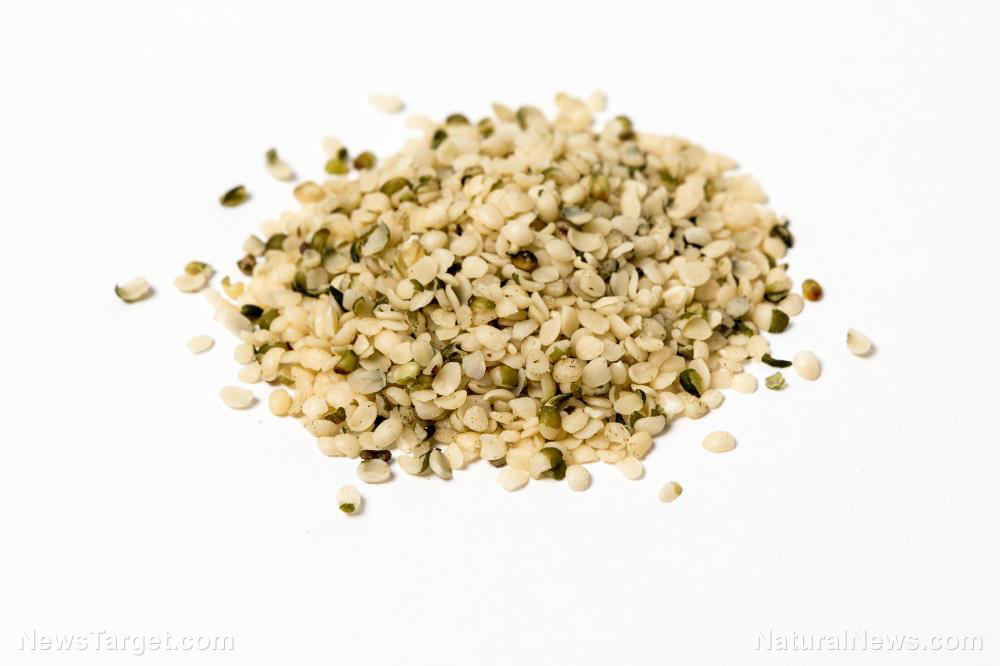How to make and use vegetable powder
09/15/2021 / By Divina Ramirez

Vegetable powders are made from ground, dehydrated vegetables. By processing vegetables this way, you get to extend their shelf life and enjoy an extremely versatile product that you can add to almost any dish. Plus, vegetable powders are lightweight and take up little space in your pantry, even in large quantities.
Read on to learn how to make vegetable powder. (h/t to FoodStorageMoms.com)
How to dehydrate vegetables
The first step to making vegetable powder is to dehydrate your vegetables. You can do this with an electric food dehydrator or an oven on the lowest setting. But regardless of the equipment you use, it’s important to wash your vegetables thoroughly. You can then let them soak in a solution of one part white vinegar to three parts room temperature water for 10 minutes to make sure they’re free of contaminants.
You’ll then need to prep your vegetables before dehydrating them. This process may vary slightly depending on the vegetables you’re using. If you’re dehydrating “hard” vegetables like potatoes and other stalky vegetables, it’s a good idea to shred them beforehand. Shredded vegetables can be ground into a powder more easily and they dehydrate more evenly. This way, you won’t have soft, moist centers inside the vegetables.
On the other hand, “soft” vegetables like leafy greens should be pureed before being dehydrated. Clean them as you normally would, then mash them into a puree. Spread the puree on a baking sheet lined with parchment paper and place that in your oven or dehydrator. Process until it takes on a texture similar to fruit leather.
If you’re using a dehydrator, you can spread your prepped vegetables on the built-in racks. Take note that dehydrating food normally takes several hours so that it dries slowly instead of burning.
Once you’ve dehydrated your vegetables, you’ll need to condition them. If you live someplace humid, pack your vegetables loosely in plastic or glass jars. Leave them on your countertop for seven to 10 days. Shake the jars daily to separate the pieces and check for moisture. If you live someplace hot and dry, set the jars on your countertop for five to seven days.
After the conditioning period, you can grind your dehydrated vegetables into vegetable powder.
How to make vegetable powder
You can make single-ingredient vegetable powders or one that’s made with a mixture of vegetables. If you’re doing the latter, note that the resulting powder will have a more neutral taste. If your mixture is particularly heavy in a certain vegetable, the powder will take on more of that vegetable’s flavor.
Start by placing your dehydrated vegetables in a high-speed blender. Pulse it a few times to break up any big pieces, then run it on a sustained cycle to thoroughly pulverize the pieces. You can strain and blend the powder again if you want a finer texture.
Transfer the powder into airtight glass containers for long-term storage. Don’t forget to add labels so you know what powders they are. Generally, vegetable powders will keep for six to nine months. If you open a jar of powder and can still readily identify what vegetable it is by smell, then it’s still safe to eat. However, if you have a hard time identifying the vegetable or you notice it looks paler, use it immediately or make a new batch.
How to use vegetable powder
Vegetable powders are a great way to sneak more vegetables into your meals. They’re particularly useful if your children don’t like to eat their vegetables. But vegetable powders are also great for adults in that they allow you to increase your nutrient intake. However, they shouldn’t be used as a replacement for actual vegetables. (Related: Vegetables are essential for food and nutrition security.)
Here are a few ways you can incorporate vegetable powder into your daily routine:
- Use it to garnish soups and salads
- Add it to dips
- Add it to breakfast smoothies
- Add it to stews and soups
- Sprinkle it over cooked vegetables
- Mix it with mashed potatoes
- Add it to scrambled eggs
- Mix it with pastry batter
Learn more about other methods of food preservation at FoodStorage.news.
Sources include:
Tagged Under: emergency food, food dehydration, food independence, Food storage, food supply, homesteading, preparedness, prepping, survival, survival food, sustainable living, tips
RECENT NEWS & ARTICLES
COPYRIGHT © 2017 PREPAREDNESS NEWS





















